#22 The Blue Hour Issue
How riding home in the dark, and dreading monday made me a photographer
Welcome to issue 22. This one is fully dedicated to my favorite time of the day to make photos. It’s a story about light, memory, and the quiet teenage rituals that shaped the way I see the world today. I hope you enjoy it.
NB: I wrote this piece for the first issue of Field Mag Print, consider grabbing a copy to see these images, and many more, in all their printed glory.
How riding home in the dark, and dreading monday made me a photographer
As a teenager growing up in a remote corner of Southern France, I had a bit of a tradition. I'd drive my underpowered 50cc dirt bike to a high viewpoint near my parents' house to watch the sun set over the forested hills. The viewpoint was perfect—it had a worn-out map of the various points of interest such as chapels falling into disrepair, sleepy hamlets, creeks, and names of the highest summits. When I say summits, it was more like lumps that were higher than the other lumps. These weren't the Alps—more like Nature's half-hearted attempt at topography.
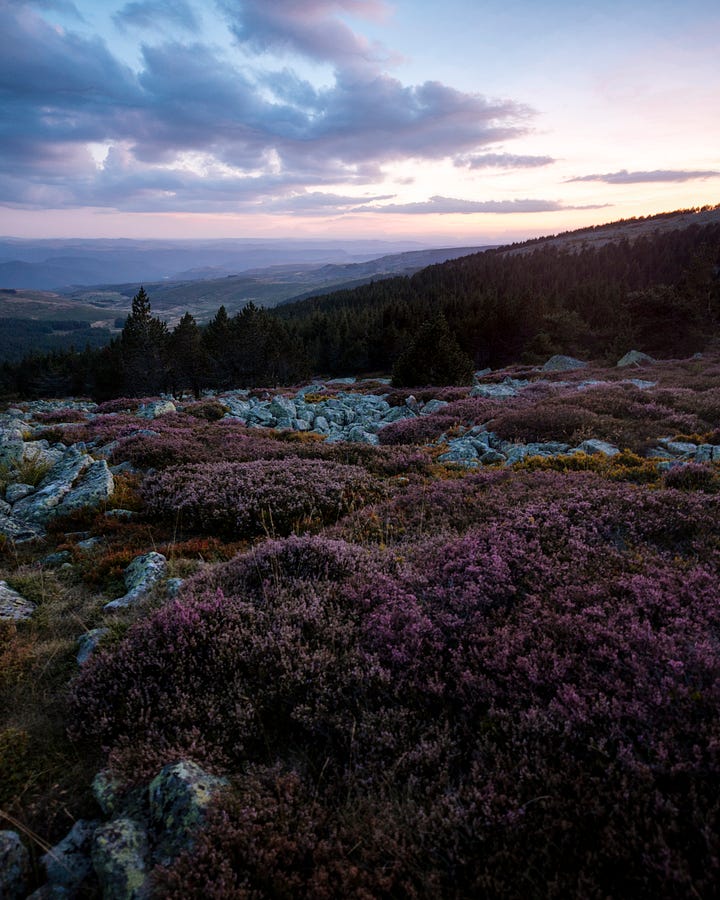
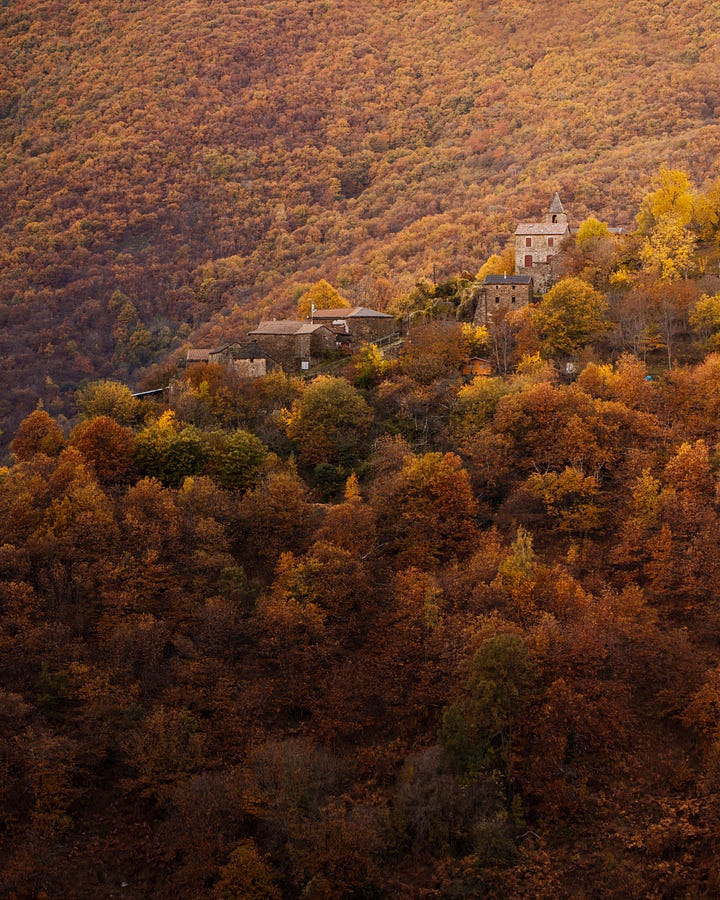
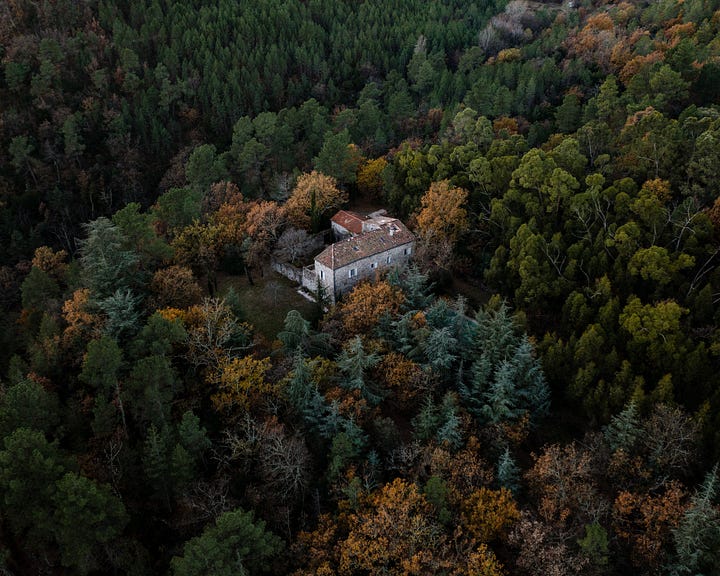
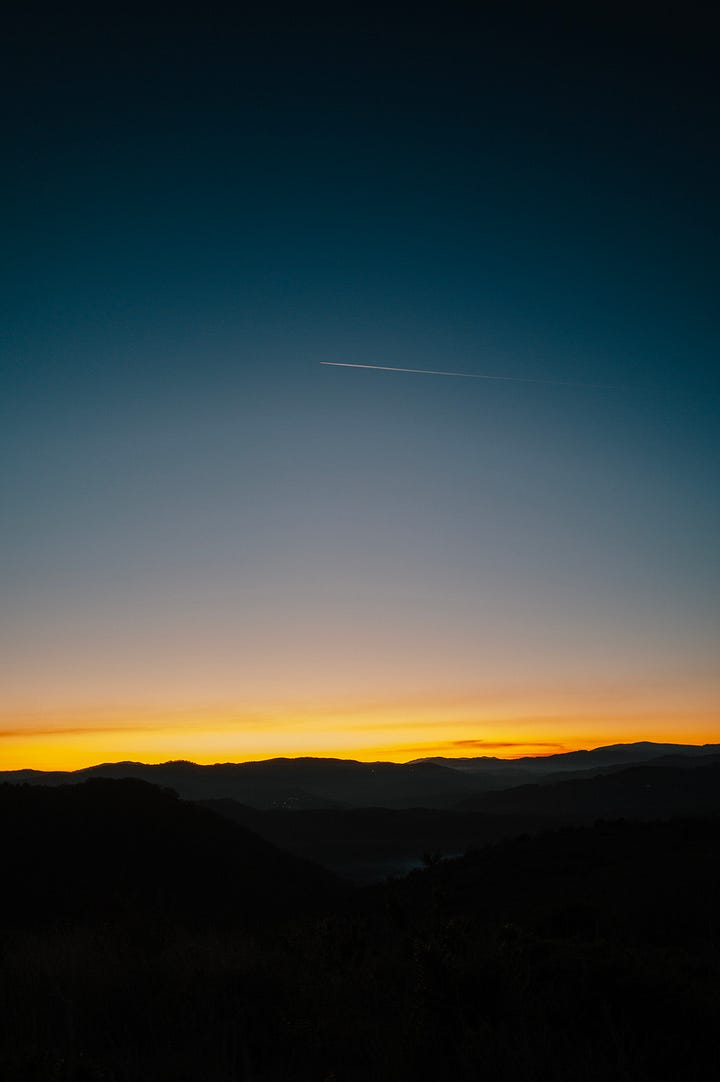
Sitting on the edge of the rocky cliff on fencing so ancient it remember the revolution, I'd feel the October freeze (that's when the best sunsets start) on my prepubescent face. It was eerily quiet. I knew I was going back to boarding school tomorrow, Monday, but for now, I just wanted this moment to last forever. So I'd stay until the very last blue hue in the sky, until darkness had successfully completed its hostile takeover of the day. Then I'd ride back home in near total darkness, with the timid yellow headlight as my only reference point. It was on those Sunday rides that I learned to look at light—how the yellow headlight was pleasant to look at in the blue hour, how inviting it felt.
I didn't realize it but later on, those quiet moments perched on my viewpoint, watching the sky gradually go from day to night would become my sort of inspiration well. But as with a lot of things in life, it started out of necessity. I simply wanted to stay out longer because I dreaded going back to school the next day. And, to this day, I don't enjoy waking up at 4am for a summer sunrise, so I'd focus on shooting sunset and the light that happened right after, so I'd get more light opportunities. Constraints breed creativity. I'd play this blue hour game so much that it became a kind of signature where people would only talk to me about blue hour, and that's how they got to know my work. But what they didn't know is that it wasn't a conscious choice, it was just a way to keep that teenage boy alive. To preserve him like a dried flower between the heavy pages of adult life.
Why am I telling you about blue hour? Well, if I ask my photo catalog about blue hour, it says that I have more than 144,000 images tagged under that. So you could argue that I've spent a lot of time working with that elusive time of day. Through this guide, I'm going to tell you how you can too, if you are so inclined.
Gear Stuff: Cameras, shutter speed, ISO, and the all mighty aperture
Making satisfying shots at blue hour isn't a democratic endeavor. It's one of those few moments in photography where having fancier gear will actually yield substantially better results. Most other conditions won't. When shooting in falling light, you need three things:
A camera that handles high ISO more elegantly
Having a steady hand and/or a stabilized sensor (IBIS)
A lens with a very low aperture such as f1.4 with stabilization
This combo will make you unstoppable. You won't need to lug that silly tripod and you'll just have a much better time knowing that you're only relying on one camera and one lens. Less gear = less decisions to make.
As for the camera, I'd go for the nicest one you can afford, even if it needs to be second hand. The newer the better because sensors get dramatically better at handling low light. And, more importantly, most manufacturers have started stabilizing their sensors so we can shoot at crazy low shutter speeds. In any endeavor, I prefer using a lower shutter speed with a lower ISO. This gets me the cleanest RAW file possible for enjoyable post-production. I might just add noise after the fact, but I want to choose how much goes into it, not the other way around. So... get a camera that handles ISO 6400 very well and that has, preferably, a stabilized sensor.
Once you're up on that alpine ridge, with your new fancy camera in hand, and that elusive twilight you have been waiting for all day, remember to relax your breathing. I like taking a big breath in and holding it as I press the shutter, running through as many cycles as the day will give me.
If it's a really dire situation where it's getting very dark and I need to be mega steady, I'll turn the camera upside down and place the screen against my forehead to gain extra stability. That simple trick has saved me more times than I remember.
When it comes to the lens, go for wide—big scenes look at their best during blue hour as a rule of thumb. Usually I love to incorporate a lot of foreground to create leading lines that are hard not to look at as a viewer. It's about that irresistible balance of lines, placement of light, and shapes in the landscape that a satisfying landscape image lies for me. My go-to lens for these nocturnal endeavors is the 24mm f1.4 with stabilization. But you can also rock a wider lens with an f2.8 aperture, it just will need more ISO's.
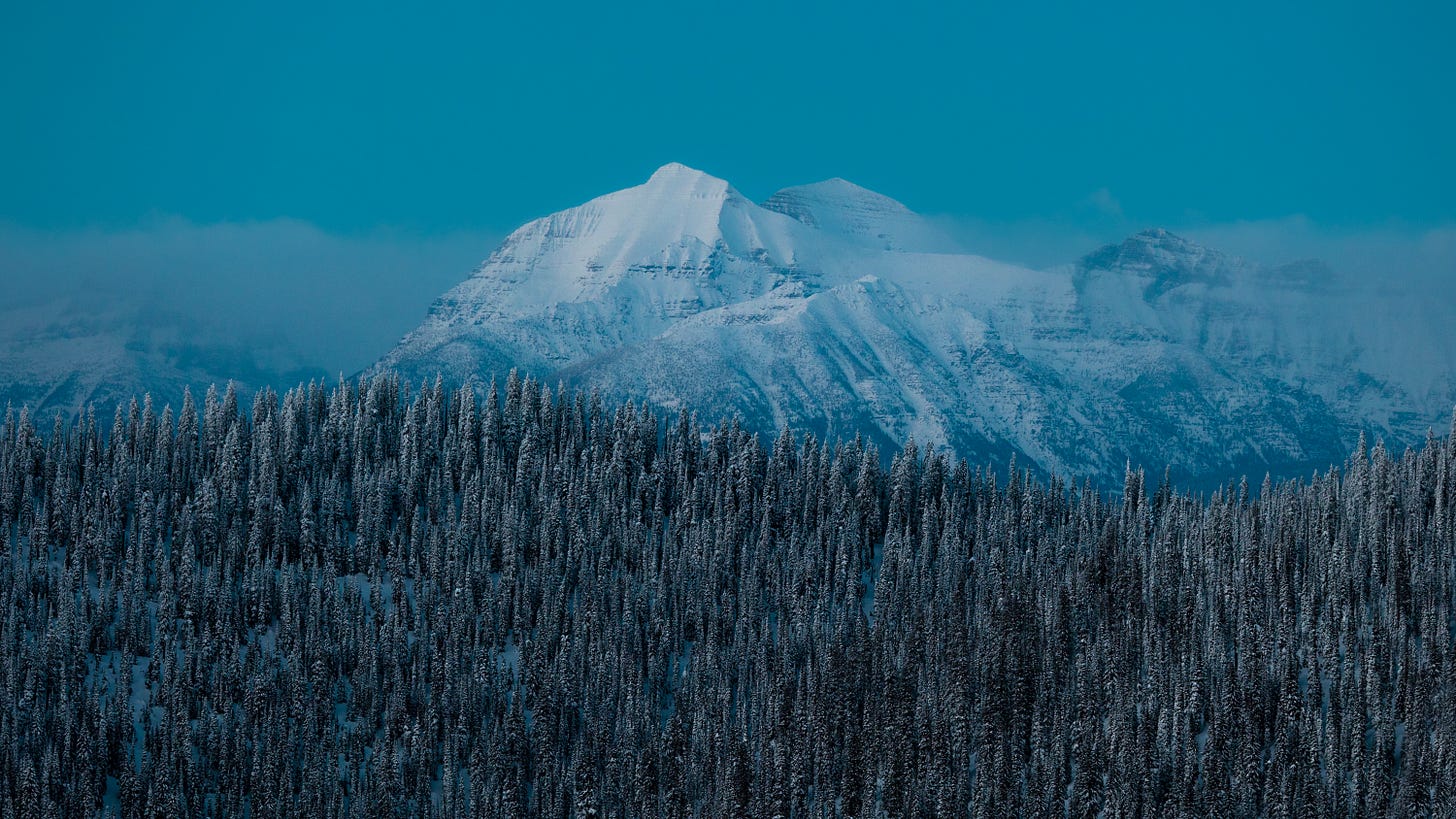
Make a day out of it
My favorite part of chasing blue hour is that you get places all to yourself. Usually, after sunset, everyone leaves and this human ebb and flow has created so many peaceful memories in the mountains than I can remember. I also couldn't tell you how many times I've had to explain to people walking down the mountain at 6pm why I was waddling up... The life of the twilight aficionado resembles the one of the salmon, rushing up against the river's flow. Instead our river is a human river. I secretly enjoy this outlier part of the process.
Still, shooting darkness in far away places comes with its set of natural challenges such as: You'll be walking down in the dark. All restaurants will be closed.
Those limitations give us room to create our own experiences. Let me paint you a picture. Imagine yourself deep in some mountain range you love, having witnessed a warm summer sunset at this place you've been researching for days. The sun has now fully set, everyone has left, you've packed a light down because it gets cold up there, even in August. You are with a few friends, sitting on flat rocks, cameras by your side, sharing a few slices of prosciutto, chunks of cheese, and passing on a baguette—a makeshift feast that no three star chef would sneeze at given the view. You snap a photo between bites. Maybe share a joke or two. You're in good company, and there's no other place you'd rather be right now. That is the pinnacle experience of blue hour for me. And, you will probably build your own. But the beauty resides in its making. You are the architect of the experience and that to me is the draw with photography. Later on that night, you will sleep easy knowing that you gave it all, that you stayed until it was completely dark, no stone left unturned, and the goods are resting in the memory cards.
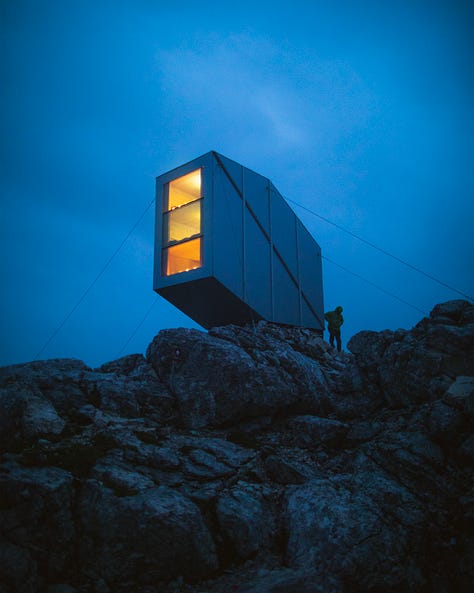


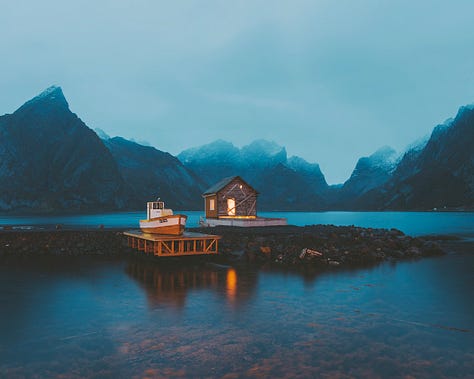

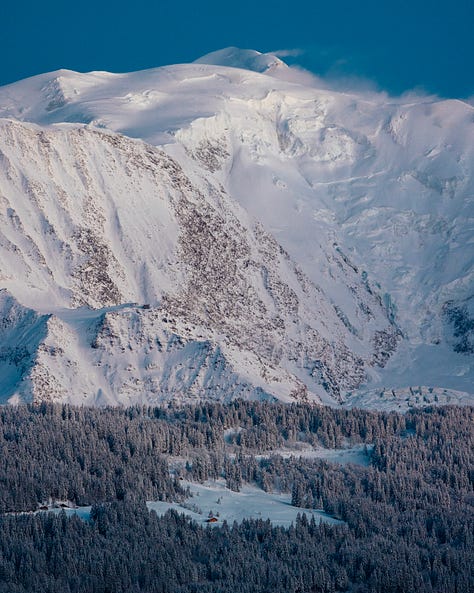
Go Deeper
The Lofoten No One Sees Retreat 2025 (1 spot left): Experience the lesser-known side of the Lofoten Islands with a group of like-minded photographers led by Alex Strohl.
Editing flow playlist on Spotify: Get in the mood to do deep work with my instrumental playlist.
My editing presets: Speed up your editing workflow and achieve unique edits with my Lightroom editing packs.



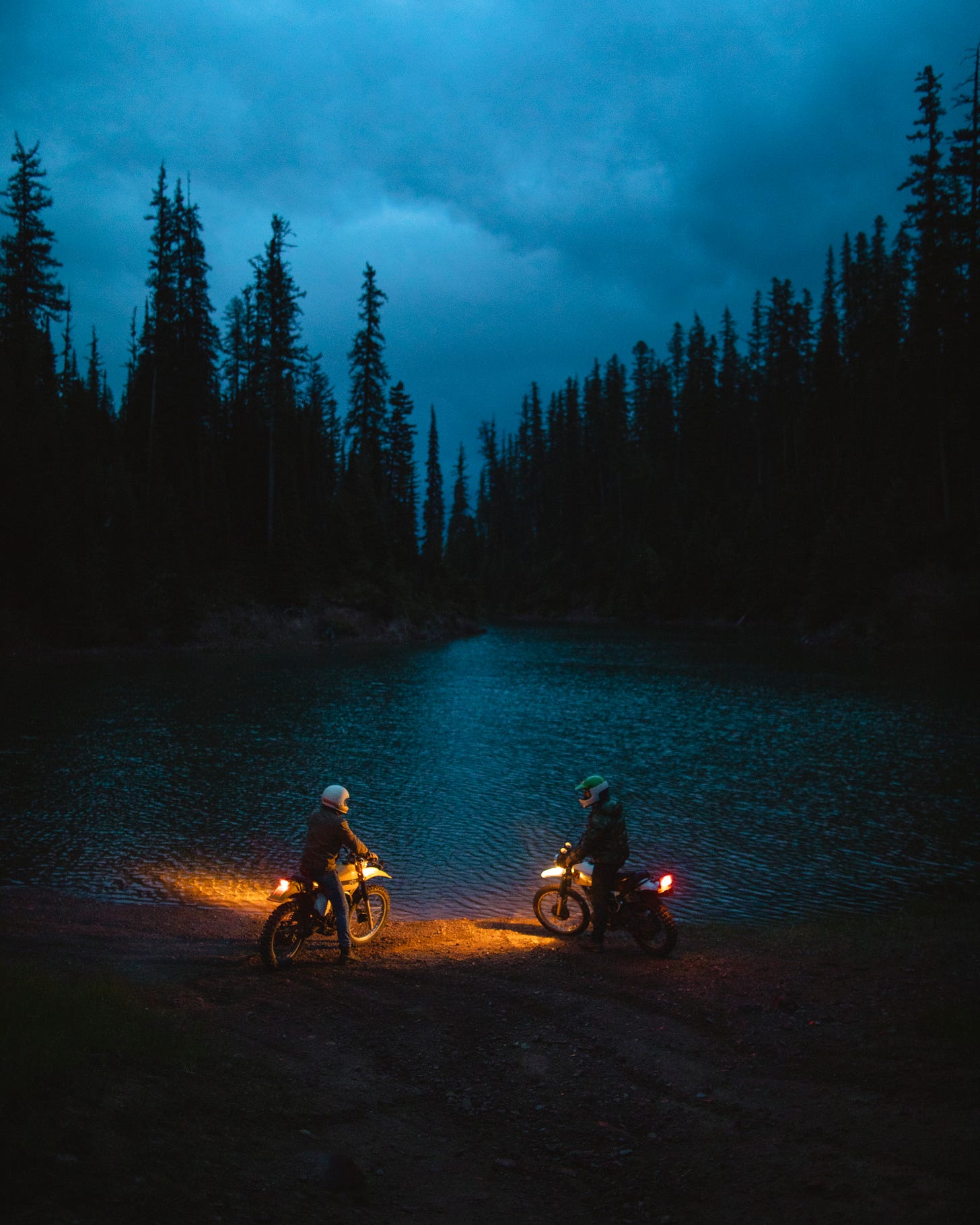
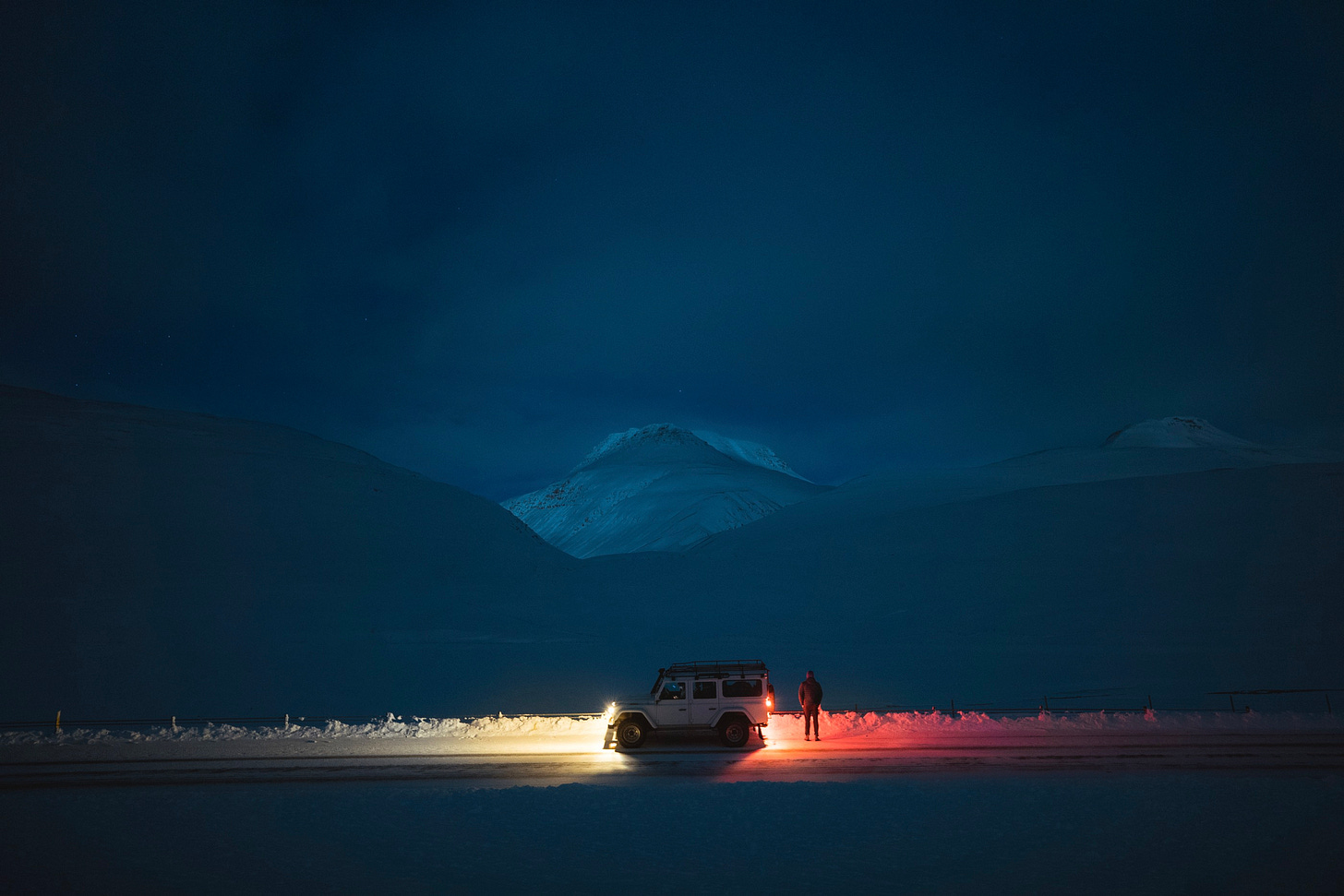
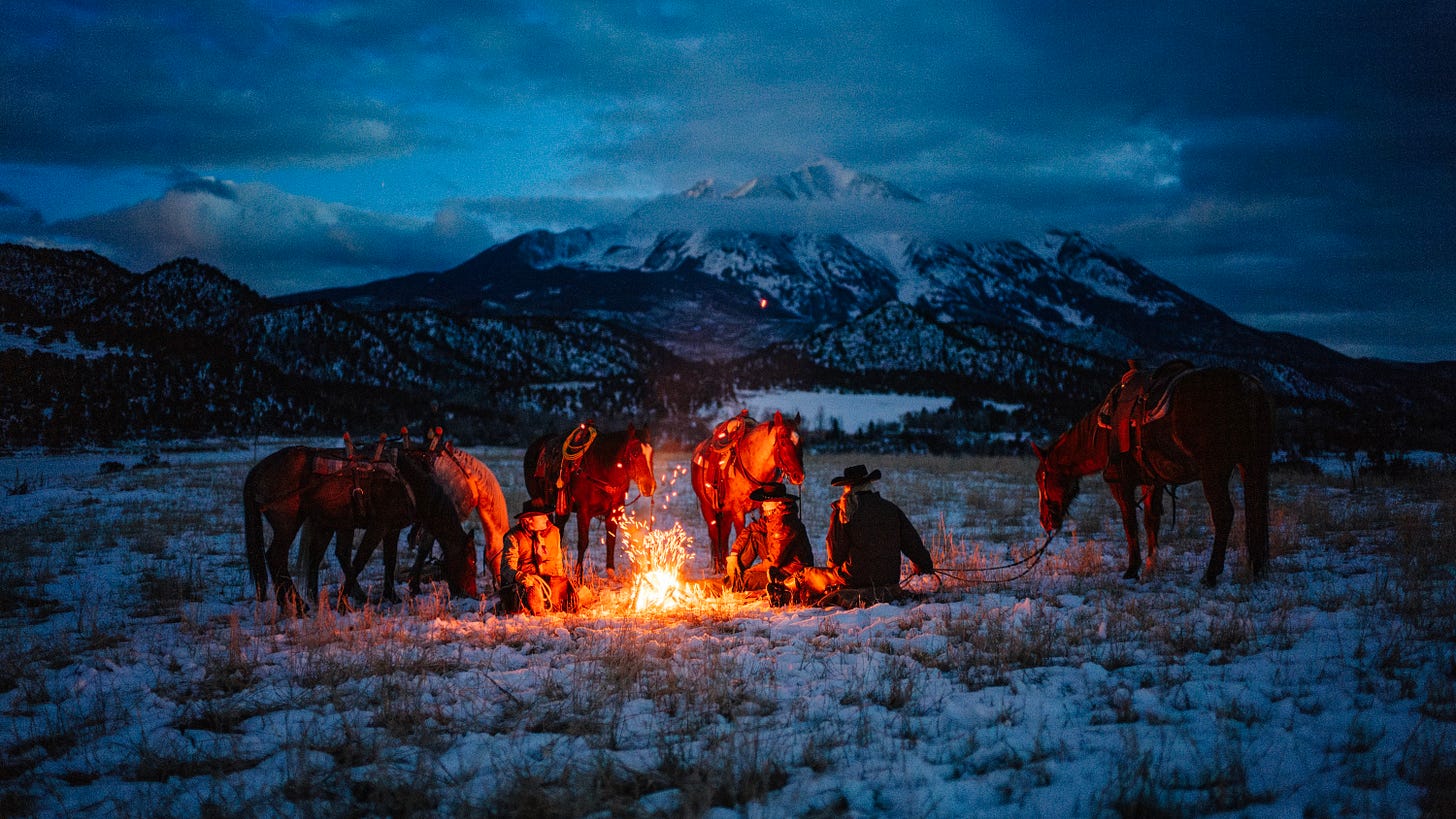
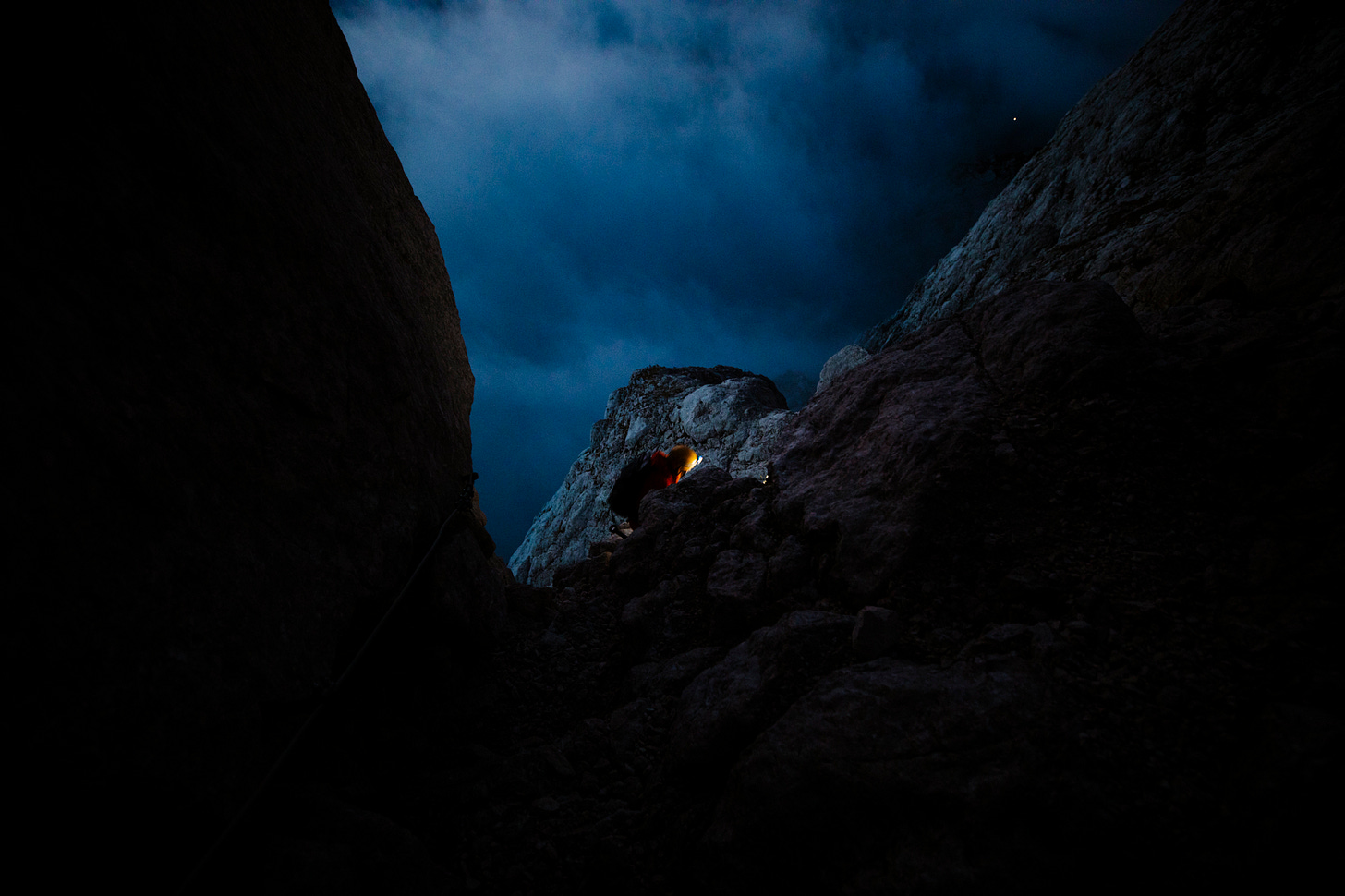
Lovely colors, Alex. Really enjoy the night and dusk shooting atmospheres.
Great images and great tips Alex - thanks